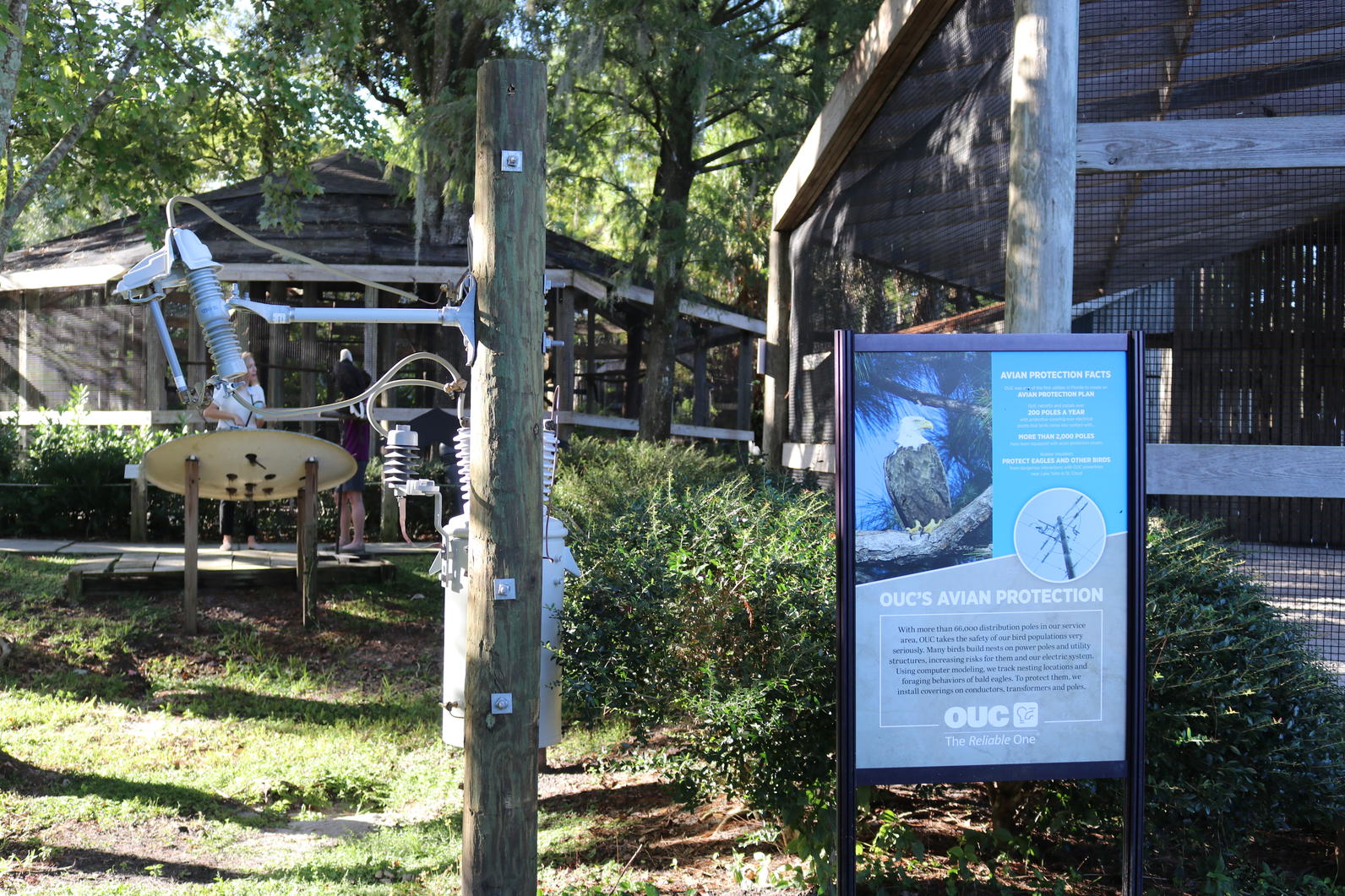Photo: from left to right - Beth Alvi, Shawnlei Breeding, Bill Randolph, Helen Marshall, and Katie Warner.
Audubon Center for Birds of Prey unveiled a new exhibit at their location in Maitland on Friday, October 11th. Sponsored by OUC – The Reliable One - the new exhibit focuses on Avian Protection for raptors and other birds, especially around power lines and transformers.
Each year, Audubon Center for Birds of Prey receives raptors injured by electrocutions. Many cannot be released due to their injuries. Birds build nests on power poles and utility structures, increasing risks for them and our electric system. To protect raptors and other species, OUC installs coverings on conductors, transformers, and poles.
“We are excited to showcase this new exhibit at the Center for Birds of Prey. Each year, over 15,000 visitors will be able to learn about threats to raptors and how community partners are helping eagles and other raptors stay safe,” says Katie Warner, Director at Audubon Center for Birds of Prey.
“Our goal is to prevent bird interactions with power lines from happening because they are not only harmful to wildlife but also the cause of outages,”said Jenise Osani, OUC Interim Managing Director, Marketing, Communications and Community Relations. “Together with Audubon, we can raise awareness of the important role these animals play in our environment and what we’re doing to protect them.”
As the Audubon Center for Birds of Prey approaches its 40th anniversary this month, we are excited to offer new educational opportunities for visitors. Each year, the Center admits and treats between 80-90 injured Bald Eagles. To date, our team has been able to release over 600 back into the wild. Audubon continues to be a leader in eagle care and education, with more than 350 volunteers monitoring urban eagle nests statewide as part of its community science Audubon EagleWatch Program.





